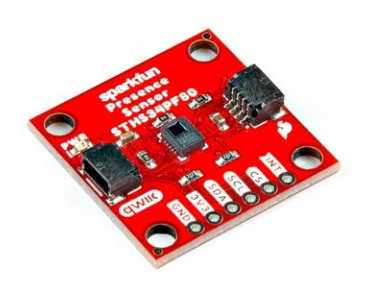XRP: Simplifying Robotics Education with µPython and ST Sensors

XRP AND THE ART OF DEMYSTIFYING ROBOTICS AND ΜPYTHON
From Classroom to Cutting Edge
XRP is designed to make robotics accessible to everyone. At its heart lies a low-cost controller paired with a tool-free standalone kit that can be assembled within minutes, regardless of prior experience. To support learners, Experiential has built a dedicated website and community where students and enthusiasts can find guidance. The platform walks users through creating applications with a web-based editor, while structured courses provide the technical depth needed to understand the underlying systems. By the end, learners gain a solid foundation in advanced robotics principles and embedded systems, along with practical skills in popular languages such as µPython.
From Sensors to Perception
To reach such a broad audience and accommodate varying experience levels, SparkFun and Experiential prioritized devices that are genuinely “easy to use.” While that phrase may seem unusual in the context of sensors, it is exactly why they chose the LSM6DSOX. Accessibility meant the ability to quickly source components, build abstraction layers, and allow even beginners to capture data from MEMS sensors for their own applications. Achieving this required strong documentation, reliable drivers, and wide industry support—qualities the LSM6DSOX is well known for.
Too often, companies working with embedded systems overlook the importance of usability in sensors or microcontrollers. Yet, the device ecosystem can have a significant impact on prototyping, development efficiency, and time-to-market. Decision-makers rarely ask their teams if a component is backed by proven drivers or robust documentation, but projects like XRP highlight how these factors make technology more approachable and cost-effective. Thanks to the success of the LSM6DSOX, Experiential is already exploring the addition of other STMicroelectronics sensors to its platform.
BEYOND XRP: THE SCIENCE OF RAPID PROTOTYPING
Swappable MCUs
SparkFun’s collaboration with ST goes far beyond the LSM6DSOX on XRP. In fact, the company developed much of the robot’s sensor stack independently rather than relying on pre-existing code. ST’s authorized partners also provide a wide range of development boards, such as those using the STM32F405 and STM32WB5MMG, integrated into SparkFun’s M.2 MicroMod system. With its modular slot design, engineers can easily swap devices to prototype different hardware setups quickly. This approach lowers the barrier for less experienced engineers, enabling them to start with beginner-friendly tools before transitioning to industry-standard environments like STM32CubeMX.
Swappable Sensors
Another strength of SparkFun lies in its wide portfolio of sensor boards with Qwiic connectors. Whether engineers want to integrate time-of-flight sensors such as VL53L1X, VL53L4CD, or VL53L5CX, or presence detection solutions like the STHS34PF80, SparkFun makes it easy to interchange modules. Using SparkFun’s DataLogger IoT, teams can swap sensors and begin capturing useful data in just minutes. In today’s era of rapid prototyping, this kind of speed translates directly into lower costs and faster development cycles. The DataLogger IoT even comes pre-equipped with the ISM330DHCX, enabling out-of-the-box data collection without additional boards.
